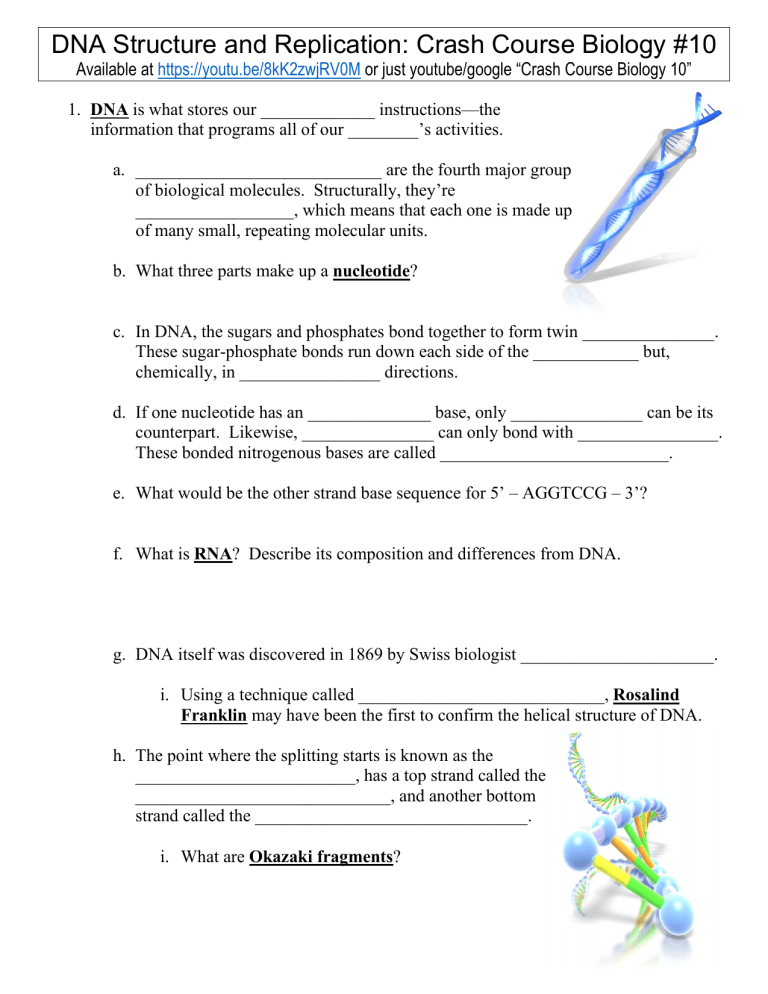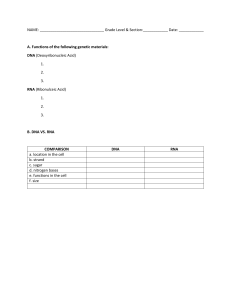
DNA Structure and Replication: Crash Course Biology #10 Available at https://youtu.be/8kK2zwjRV0M or just youtube/google “Crash Course Biology 10” 1. DNA is what stores our _____________ instructions—the information that programs all of our ________’s activities. a. ____________________________ are the fourth major group of biological molecules. Structurally, they’re __________________, which means that each one is made up of many small, repeating molecular units. b. What three parts make up a nucleotide? c. In DNA, the sugars and phosphates bond together to form twin _______________. These sugar-phosphate bonds run down each side of the ____________ but, chemically, in ________________ directions. d. If one nucleotide has an ______________ base, only _______________ can be its counterpart. Likewise, _______________ can only bond with ________________. These bonded nitrogenous bases are called __________________________. e. What would be the other strand base sequence for 5’ – AGGTCCG – 3’? f. What is RNA? Describe its composition and differences from DNA. g. DNA itself was discovered in 1869 by Swiss biologist ______________________. i. Using a technique called ____________________________, Rosalind Franklin may have been the first to confirm the helical structure of DNA. h. The point where the splitting starts is known as the _________________________, has a top strand called the _____________________________, and another bottom strand called the _______________________________. i. What are Okazaki fragments? ii. DNA gets _________________ wrong about one in every ______________________ nucleotides. Biology Crash Course Answer Keys Crash Course 10 – DNA Structure and Replication 1. genetic; cell a. nucleic acids; polymers b. 5-carbon sugar molecule, a phosphate group, 1 of 4 nitrogen bases c. backbones; helix; opposite d. adenine; thymine; guanine; cytosine; base pairs e. 3’ – TCCAGGC – 5’ f. has a sugar-phosphate backbone with nucleotide bases attached to it; it’s a single-strand molecule; the sugar in RNA is ribose; RNA does not contain thymine g. Friedrich Miescher i. x-ray diffraction h. replication fork; leading strand; lagging strand i. an RNA primer that gives DNA Polymerase a starting point to work backwards along the strand ii. replication; 10 billion


